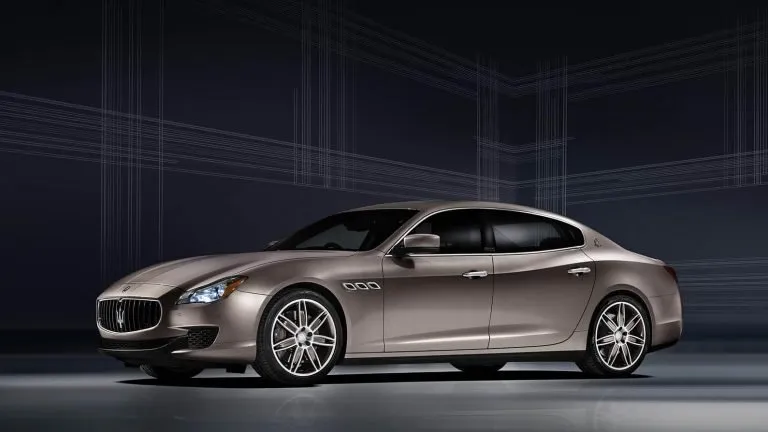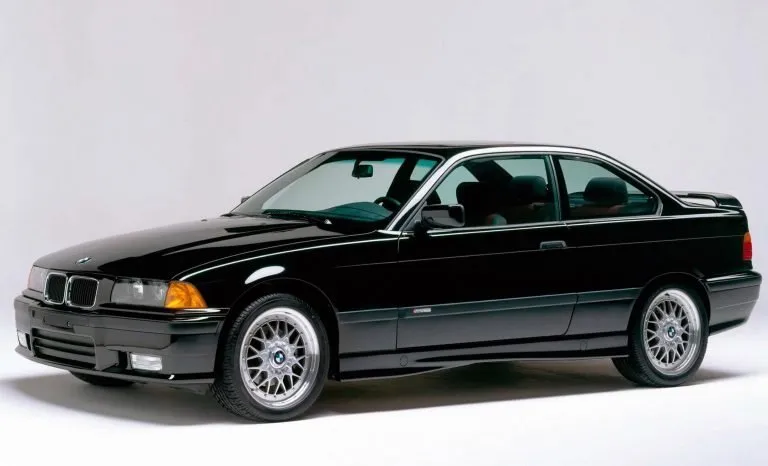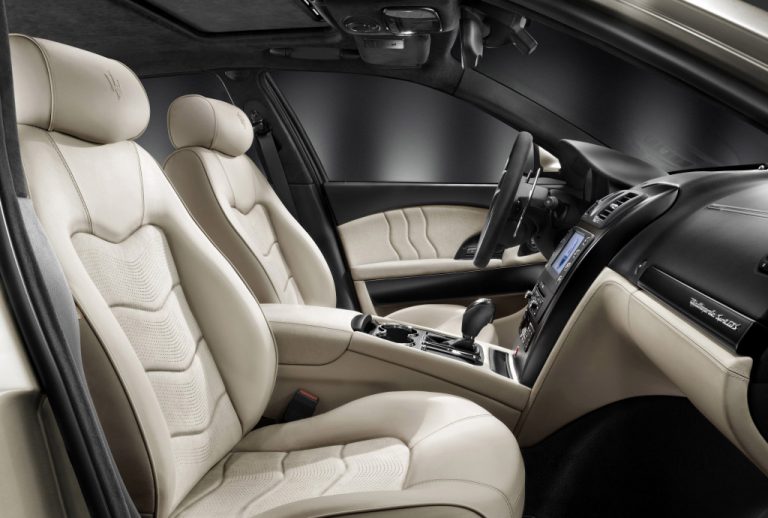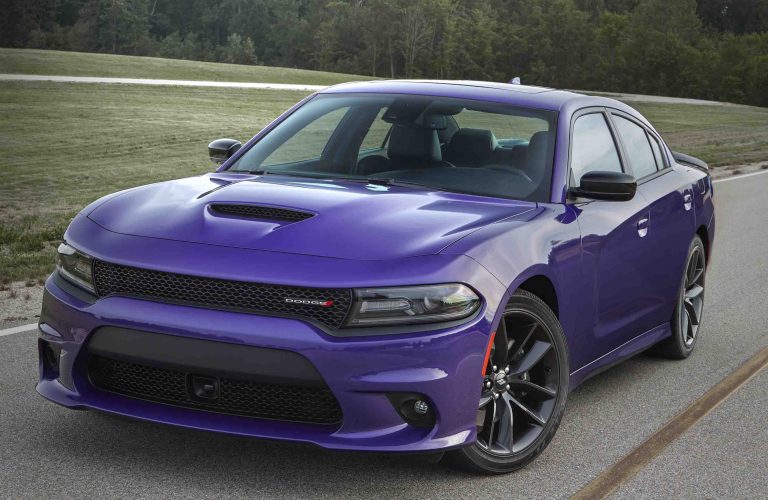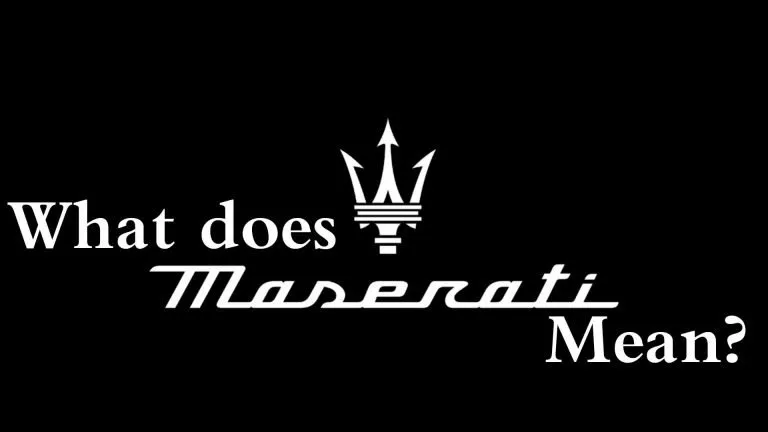Maserati Ghibli 1967 – A Priceless Sixties Classic (Maserati Ghibli I)
The Maserati Ghibli 1967 is an interesting piece of history for Maserati. It all started at the Turin Motor Show, in 1966, which saw the appearance of a car that would change motoring styles for decades to come. At the time, its revolutionary and modern look was ground shaking. An automobile so desirable that Henry Ford II would buy the first model as it arrived in America. Mr. Ford was also so impressed with this vehicle that he spoke to the Orsi family about buying their car making company – they refused.

The automobile in question is the Maserati Ghibli I, a 2+2 grand tourer that was produced in Modena from 1967 until 1973. During this time, 1,295 models rolled off the production line and were sold around the world. This was a car that everyone wanted to own and be seen in. Apart from the Head of Ford, other notable owners at the time were the French actor, Jean-Paul Belmondo, Peter Sellers and Sammy Davis Junior. Many believe this was the most beautiful car of the 1960’s and still commands respect for its elegant design and contours.
So, let’s go back to this pivotal time in Maserati’s history and see what made the Maserati Ghibli I so special.
Fast Times
The second half of the 1960’s proved to be very exciting and innovative for the Italian automotive industry. 1966 saw the first mid-engine supercar to be released to a great reception. This was the Lamborghini Miura which continued production from 1966 until 1973. In that same year, Ferrari were to unveil their new 365 grand tourer which had a strikingly modern look to it.
At the time, Maserati had just stopped the production of the 5000 GT and had the 2+2 grand tourer, the Mistral, still being built since 1963. If the Modena carmaker was to stay relevant, they needed something new and modern to compete. Maserati would turn to the design house, Ghia, and their young and ambitious designer, Giorgetto Giugiaro. At only 30 years of age, Snr Giugiaro wanted to make a name for himself and Ghia as all the major Italian design houses were extremely competitive amongst each other. Maybe this is why, only in Italy will you find such dynamic car design, as each house tries to outperform the rest with each new release.
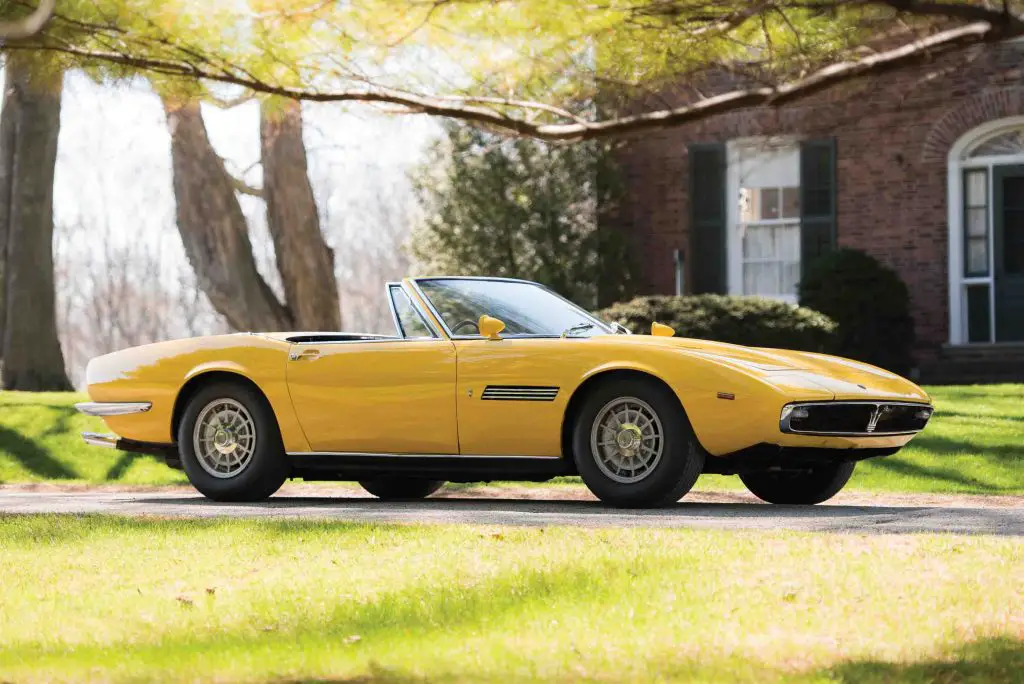
Working flat out, he was able to complete the design drawings in just three months and later, in 1969, he would create the Ghibli Spyder. With designs ready, it was the turn of the Maserati engineers to focus on the project. But with a limited workforce, trying to build 11 different road cars at the same time, this was not easy.
Maserati Ghibli I the Heart of a Racer
Though they had the design of the body, they needed to create the drivetrain. For the engine, they would turn to what was being used in the Maserati 5000 GT, which was the original racing engine from the 450S. A detuned version was installed, 4.7 liter four-cam dry sump V8 engine that produced 306 bhp and 290 lb-ft of torque. The acceleration from 0-60 mph was 6.8 seconds and it could reach a top speed of 155 mph. This would be aligned with a five-speed manual transmission from ZF, although a three-speed automatic gearbox was optional.

By utilizing the dry sump engine setup allowed the Maserati engineers to place the block much lower on the chassis which would mean they could install it for the low slung nose of the GT.
Although its specs would not allow it to directly compete with the Lamborghini and the Ferrari. Their V12 engines were purring at 8.000 rpm while the Maserati Ghibli 1967 could only muster 5,500 rpm at its redline. But it could generate most of its torque at just 3,500 rpm.
Second Skin
The sleek and elongated body shape was something that had not been seen before. The dipping front nose was accentuated by the slim grille across the front as well the unique pop-up headlights. The curved windshield and the sweeping rear window into the tail light configuration were rounded off by the alloy wheels.
The Maserati Ghibli 1967 interior would be covered in leather like a second skin. Everything from the plush front seats to the doors and roof along with the dashboard were all clothed in fine leather. The only contrast to the interior would be the wooden sports wheel (with triple drilled metal struts) and the wooden gear stick knob.

Dials and gauges were ergonomically laid out across the leather dash. In prominent position were the speedometer and tachometer while smaller gages were placed between and over to the central console where the clock was located.
Behind the front seats were a couple of leather cushions in lieu of any real rear seat and the space extended all the way to the back of the car. Access to this area was either from the front or through a small trunk below the rear window.
Open Top & Bigger Engines
Two years on and the Maserati Ghibli I 1969 models would see upgrades of varying sorts. There would be a convertible edition to the 4.7 liter model that came with either a soft top, that slipped under a flush-fitting body color tonneau cover behind the front seats, or it could have a hard top that was removable.
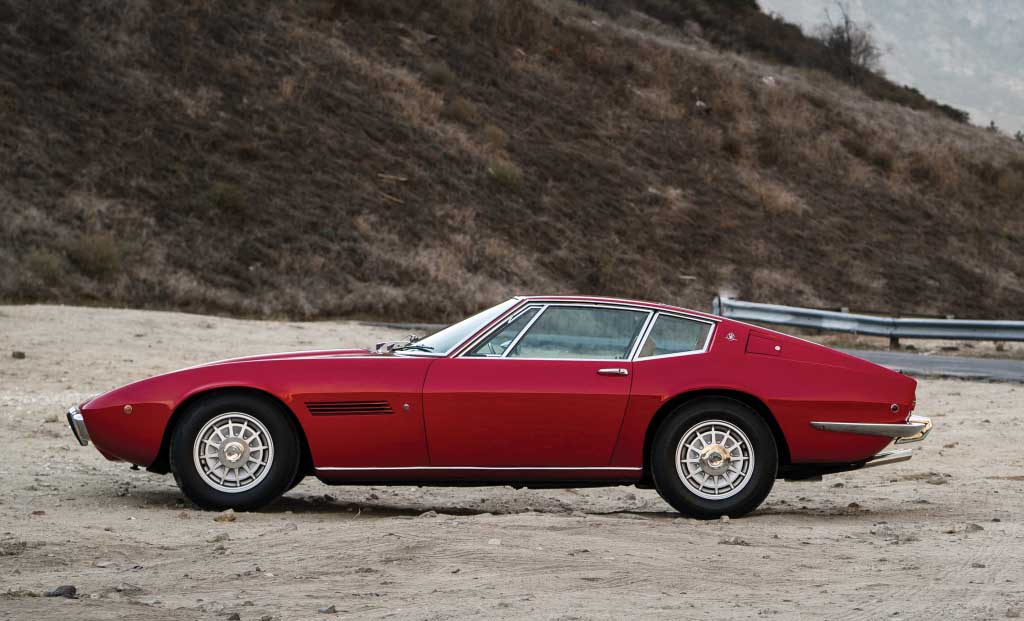
But the main change was the introduction of the Maserati Ghibli SS. A 4.9 liter V8 that created 330 bhp at 5,500 rpm and 355 lb-ft of torque at 4,000 rpm, pushing the top speed up to 174 mph. This would make it the fastest car Maserati had ever produced at this time. In the same year, they would also produce the Spyder edition of the SS.
Quality Drive Then & Now
Reviewers who have been lucky enough to get behind the wheel of this grand tourer, in recent years, have been unanimous in their praise for this aging GT. It has great room and comfort for the driver while the shift changes are smooth and responsive. Road handling is impressive with only a little of the back drifting out on tight corners.
Hefty Price Then & Now
The 1967 Maserati Ghibli value was tagged at US$19,000 when it rolled off the boats into America. As mentioned, Henry Ford II was first in line to buy one which was the equivalent to four Thunderbirds. When he parked it outside the Ford HQ, he told his designers that he would only remove it when they could design something as equally beautiful.

These days this collector’s item can be worth over $250,000 if the vehicle is in good condition.
This sixties classic has stood the test of time and, almost 55 years later, is still an excellent example of what Maserati can produce.


